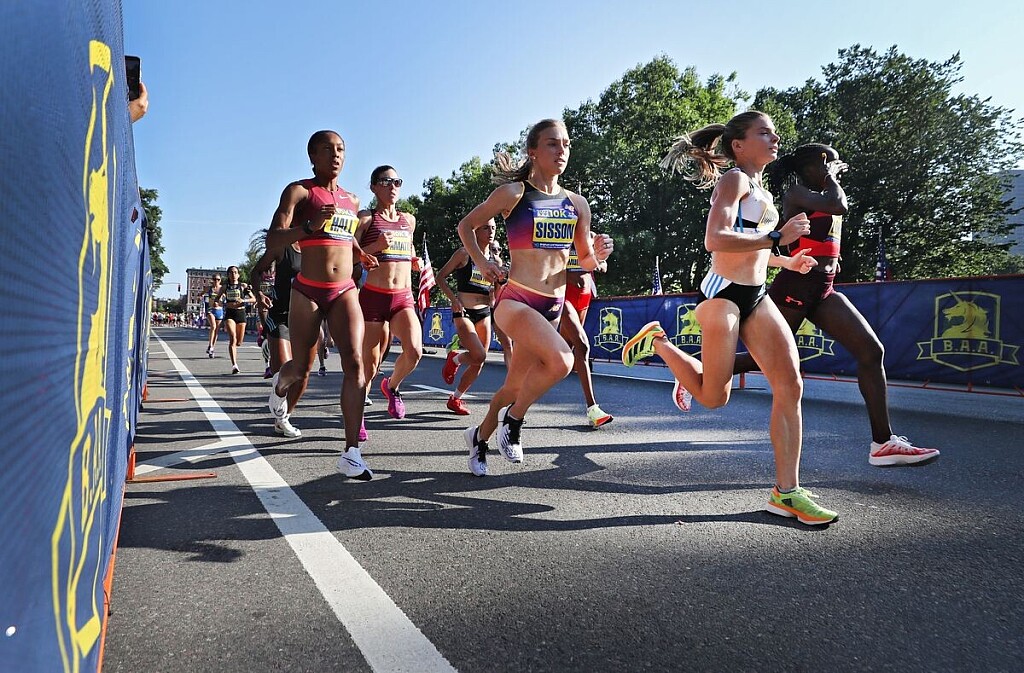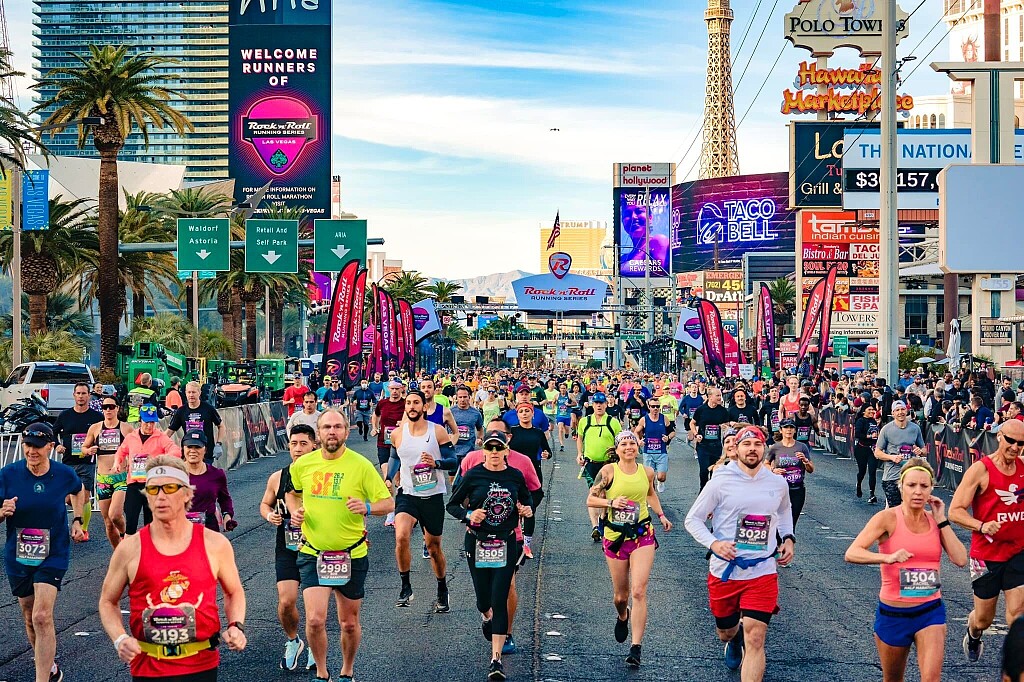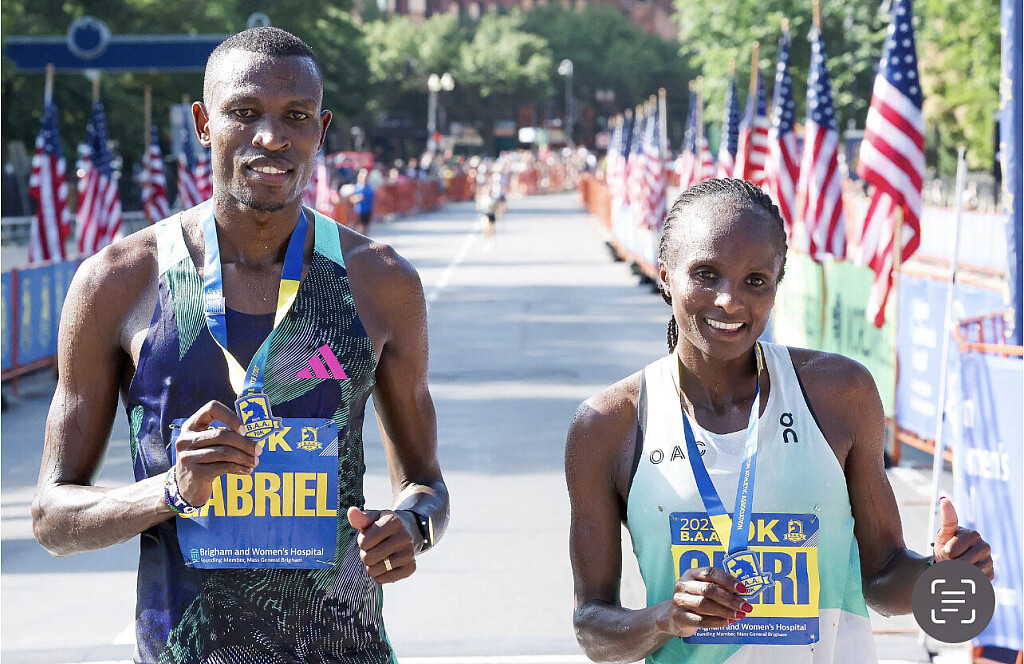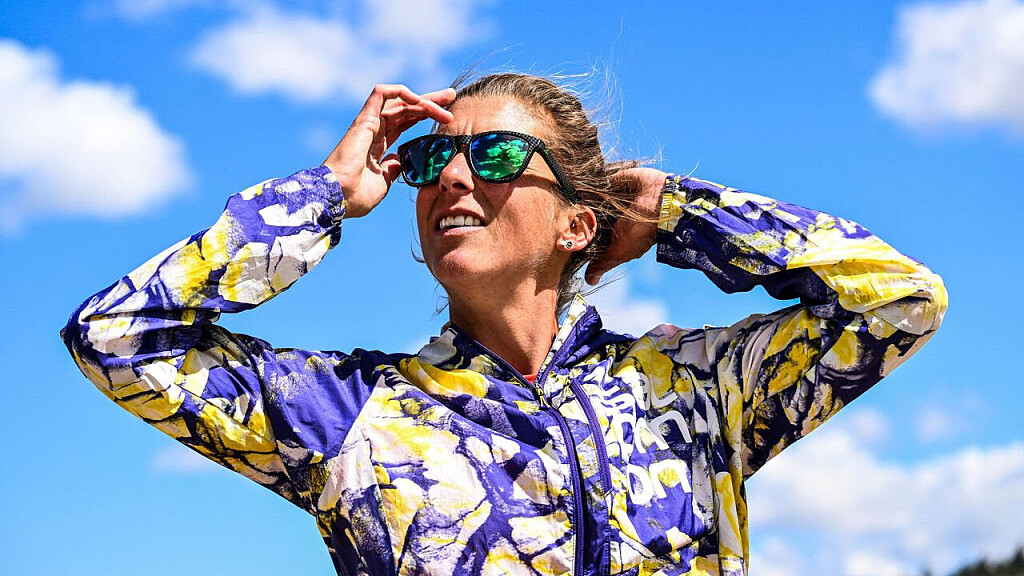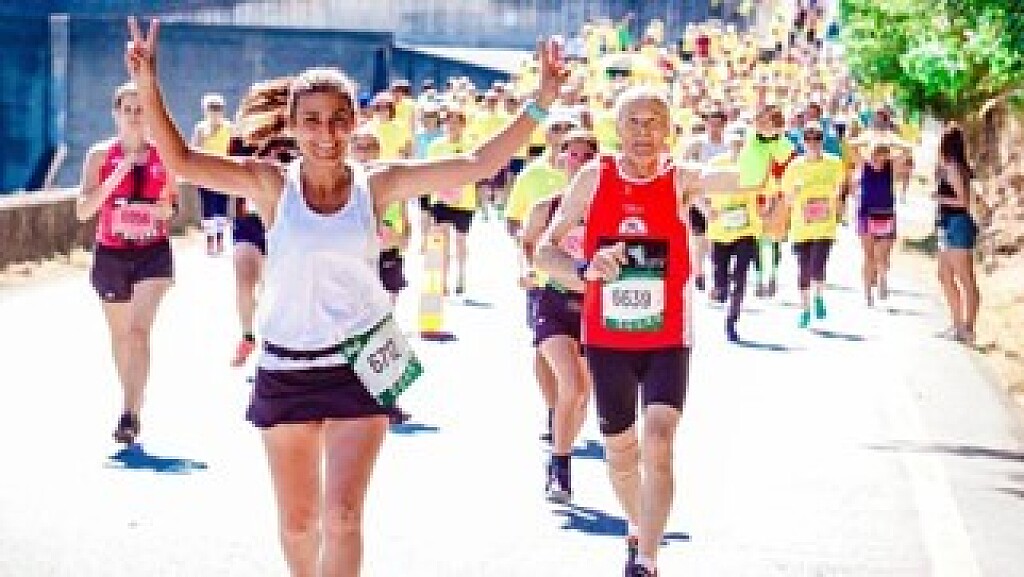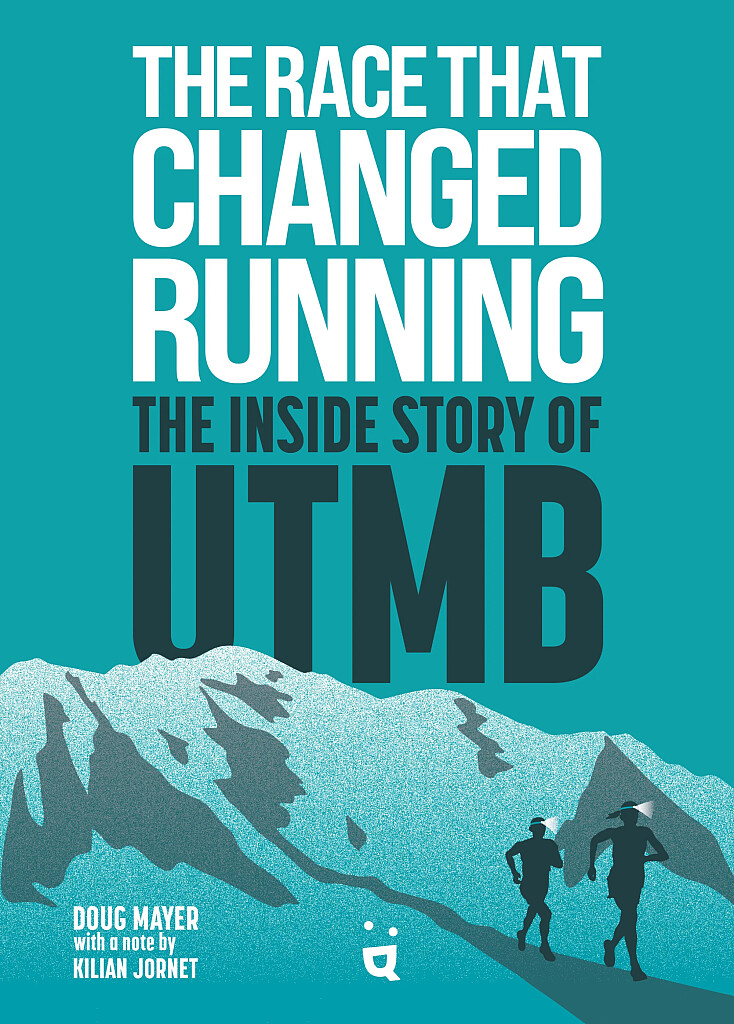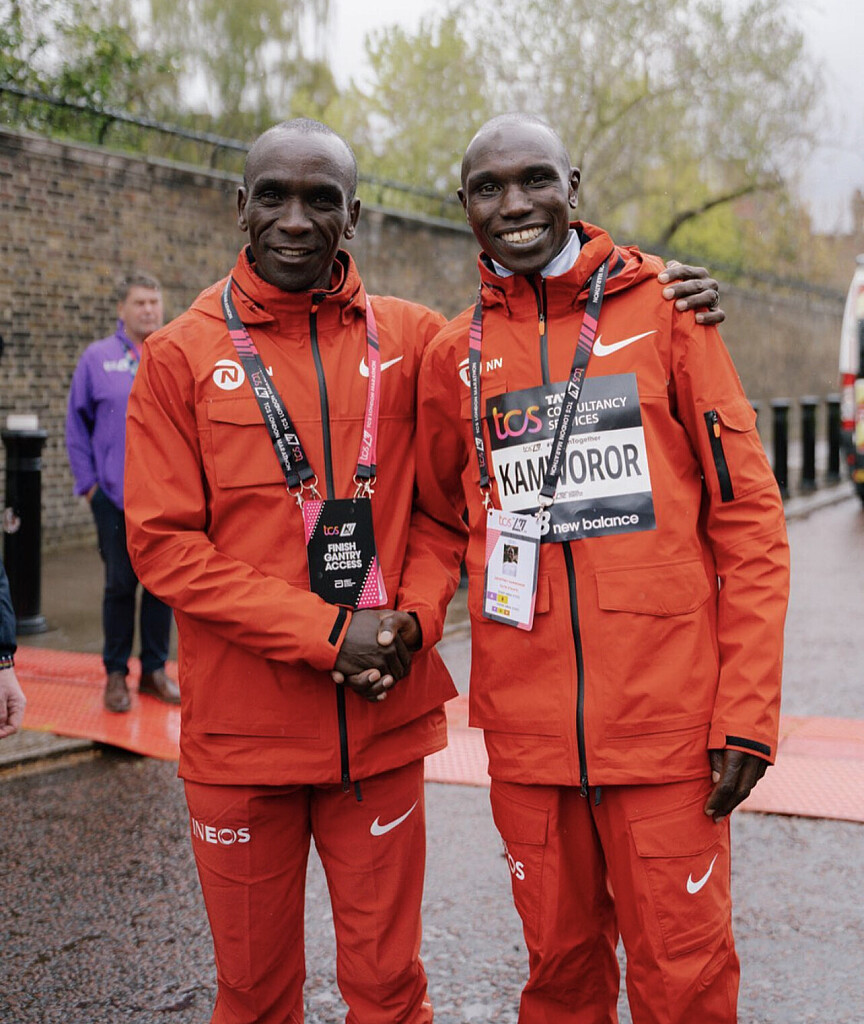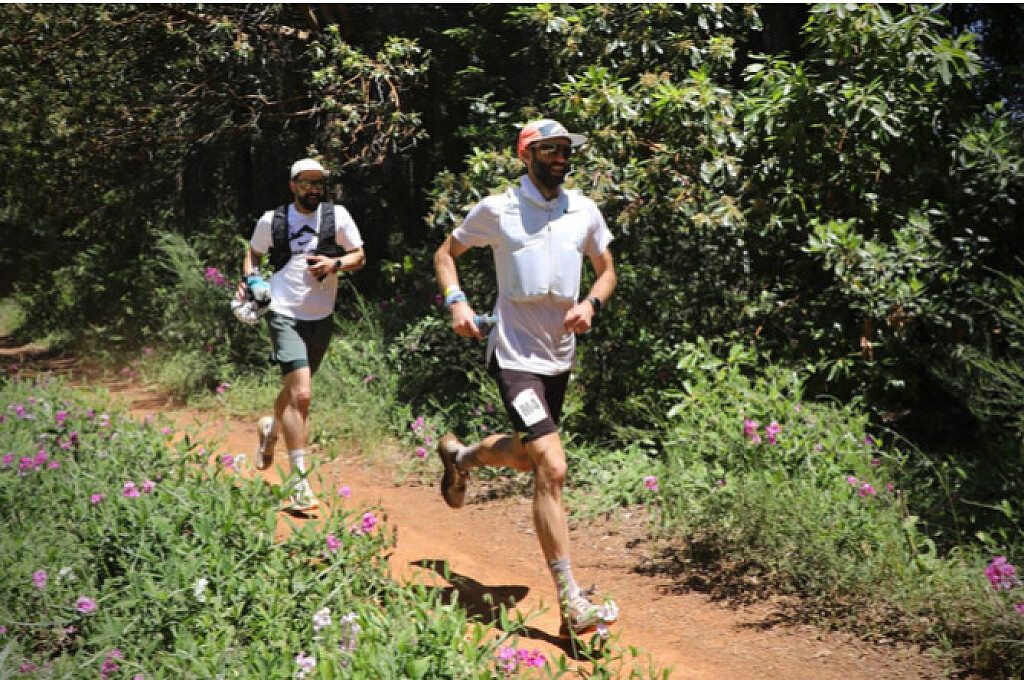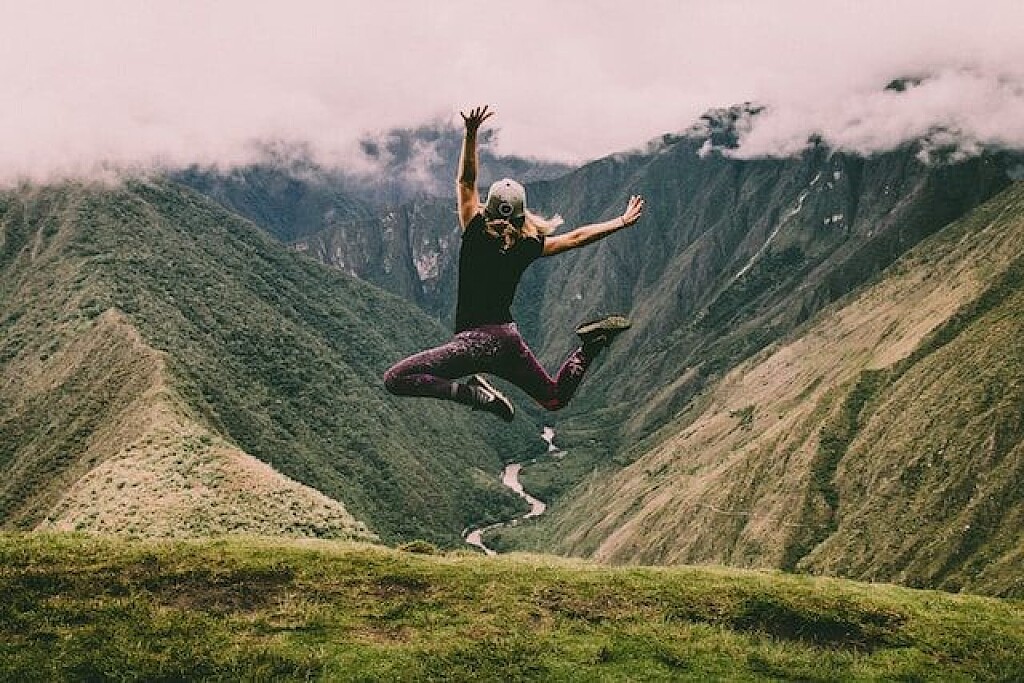Running News Daily
Top Ten Stories of the Week
7/1/2023
These are the top ten stories based on views over the last week.
World class racing returns to Boston on Sunday with the BAA 10K
The BAA 10K is this Sunday in Boston. The elites—as well as a mass field of nearly 10,000 runners—will race through the streets of the Back Bay neighborhood.
Emily Sisson has her eyes on another American record; she’s been on a tear the past year on the roads. In October, at the 2022 Chicago Marathon, she took 43 seconds off Keira D’Amato’s American record, running 2:18:29 for second place. Three months later, at the Houston Half Marathon, she broke her own American record, crossing the line in 1:06:52. She’s setting her sights on Shalane Flanagan’s 10K record of 30:52, which Flanagan set at the 2016 edition of the BAA 10K.
Also toeing the line is Molly Seidel, who’s been running some shorter races to prepare for a fall marathon. In February, she finished eighth at the U.S. Half Marathon Championships in 1:13:08.
A slew of former Boston Marathon champions are also competing on Sunday. Hellen Obiri, who won April’s race, will line up next to two-time champion Edna Kiplagat and 2015 winner Caroline Rotich. The course record of 30:36 could be up for grabs.
The men’s field is highlighted by 2021 Boston Marathon champion Benson Kipruto, who won the BAA 10K in 2018. American Leonard Korir returns as the race’s reigning champion, taking last year’s win in 28:00—12 seconds off the American record of 27:48 that has stood since 1985. Gabriel Geay, Geoffrey Koech, and Tsegay Kidanu should also be in contention.
Those in the Boston area can catch coverage of the race on WCVB. The BAA Racing App will also provide live updates and results, but there is no stream of the race. The elites are scheduled to start at 8 a.m. ET.
(06/23/23) Views: 137Runner's World
TOP Marathons Sponsored by Casinos
The running industry is booming and it's not just because of the health benefits. It also has a lot to do with how much fun it is to sign up for a marathon and get geared up for the big day.
The excitement and energy of an event like this, combined with the thrill of crossing that finish line, are enough to put anyone in a good mood—even if they're exhausted from all that training! But there's another reason why marathons have become so popular: casino sponsorships!
Benefits and Significance of Marathon Sponsorships for Casinos
Marathons are a great way for casinos to connect with the running community. While running is often seen as an individual sport, marathons can bring together thousands of people from all walks of life and make them feel like part of something bigger than themselves.
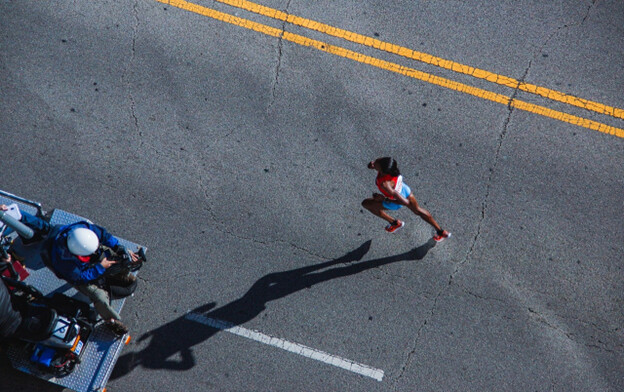
Casinos can also use marathons as an opportunity to build their brand awareness by sponsoring races or offering discounts on race registration fees for casino members. They don’t just rely on no deposit casino bonuses and other promotions as a marketing strategy. Sure, one of the top deals they can make are no deposit bonuses with Gamblizard's no deposit offers being a perfect example. Casinos who sponsor races often do so because they want their name associated with healthy lifestyles (since many people run as a form of exercise) but also because it gives them access to new customers who may be interested in visiting the casino after seeing how much they care about helping others achieve their goals through such programs.
Advantages of Casino Sponsorships in Marathons
Casinos can use marathons to promote their brand, promote a healthy lifestyle and connect with communities. Casinos are popular destinations for runners and other athletes looking for great gaming experience and low wagering bonuses. They often have race sponsorships in place to help them gain exposure among this demographic and attract more players, just like they do with low wagering casino bonuses at sites where gamblers don’t need to deposit much. But casino sponsorship goes beyond simply advertising on running gear or at the finish line.
A casino's involvement in a marathon or triathlon can go much deeper than just slapping its logo on some promotional materials and handing out free drinks at the finish line. Gambling brands may take part in planning events that support athletes' training, offer prizes for winners and host post-race parties where competitors gather after completing their race together as one big group.

Building Brand Visibility and Reputation
Casinos are building a reputation for sponsoring marathons. They're also building a reputation for being good corporate citizens, good neighbors and good employers.
The casino industry has had its share of negative press over the years. Casinos were originally seen as dens of iniquity where people went to gamble away their money and possibly engage in illegal activity. However, today's casinos have taken steps to improve their public image by sponsoring charitable events like marathons or races.
The casino industry is also seen as a good employer. In many states, casinos are required to provide jobs for people who live in economically depressed areas where unemployment rates are high. The casinos provide employment opportunities both on-site and off-site, and many of these jobs require little or no experience.
Casinos are also seen as good neighbors. They often donate money to local charities and sponsor community events.
Connecting With Communities and Promoting a Healthy Lifestyle
Casinos can make a real difference in their communities by sponsoring a marathon. They can be a part of the community and help to promote healthy living, which is something that is important for everyone.
Casinos want people to come out and have fun with them, but they also want people to feel good about themselves when they leave the casino. This means encouraging them to get out there and exercise (or join a marathon) or eat healthier food options at their restaurants or cafes.
The TCS New York City Marathon is one of the largest marathons in the world. It's also one of the oldest races in North America, having been run every year since 1970 (except 2012 and 2020 due to justified reasons). The 2019 edition featured 53,627 finishers and 98,247 applicants for entry into this international sporting event--making it the world's largest marathon by both measures. In addition to being a major athletic competition, it has also become an important cultural celebration that highlights New York City's diversity while also raising money for charity organizations such as Team For Kids Foundation and Autism Speaks!
The course starts at Fort Wadsworth in Staten Island before crossing over into Brooklyn via Verrazano-Narrows Bridge before going through Queens and then Manhattan before finishing up near Tavern of the Green with tens of thousands cheering them on their way! The marathon has many sponsors, and occasionally it is sponsored by a local casino. Moreover, they have ESPN as one of the official sponsors, who may not be a casino, but they do offer Fantasy Football Sweepstakes.
Las Vegas Rock 'n' Roll Marathon
The Las Vegas Rock 'n' Roll Marathon is one of the largest marathons in the world, attracting thousands of runners from around the globe each year. The 13th edition of the half marathon attracted more than 27,000 participants in February 2023.
Even if the races started in 1967, the annual marathon event takes place in February every year since 1993, except when it was cancelled because of the 2020 Coronavirus outbreak.
The Strip at Resorts World Las Vegas sponsored the Rock ‘n' Roll Running Series Las Vegas expo took, with an attendance exceeding 50k people over three days! Resorts World Las Vegas, the expo's presenting sponsor, organized the three-day Health & Fitness Expo on the Strip. A Health & Fitness Expo kicked off race weekend, where runners had a chance to pick up their bibs, explore interactive exhibits, shop for event merchandise, and enjoy non-stop music and live entertainment. With its opening on June 24, 2021, Resorts World Las Vegas is the Strip's newest property in over a decade. Moreover, one of the marathon editions also had MGM Resort was also one of the sponsors, and they are listed on the official marathon website.
Niagara Falls International Marathon
Niagara Falls International Marathon is one of the most popular Canadian marathons. The fun fact about it is that it starts in one country(Buffalo, NY) and ends in another (Niagara Falls, Ontario, Canada). The marathon was established as part of the casino's grand opening celebration and has been held every year since then.
The events include 5k races and 10k races as well as half marathons and full marathons. It is one of the largest and most popular marathons in Canada, with over 6,000 runners participating each year since 1974. From 1998 until 2008 when it was known as the Casino Niagara International Marathon, they had a sponsorship with Casino Niagara (as their title sponsor).
Impact of Marathon Sponsorships on the Running Industry
Marathons are an excellent way for casinos to increase their brand awareness, as well as help promote a healthy lifestyle in their community. By sponsoring these events, casinos can make running more accessible to more people. This is good news for everyone--casinos get to see their name on the race bibs and banners, while runners get some extra motivation from knowing they're part of something bigger than themselves.
Influence of Casino Sponsorships on the Running Community
The influence of casino sponsorships on the running community can be seen in many ways. Casinos can help by offering financial support for races that would otherwise not be possible, as well as providing enhanced race experiences and promoting healthy lifestyles. These benefits are important because they provide runners with an avenue for their passion and allow them to enjoy their hobby even more. They also build brand visibility, reputation and loyalty for casinos who choose to invest in these types of projects.
Financial Support and Enhanced Race Experiences
Casinos can provide financial support to races. This can come in the form of direct sponsorship or through event partnerships that include promotional opportunities. Casinos are also able to enhance the race experience for runners and spectators alike by providing amenities such as:
The idea of a casino sponsorship is not always seen as a positive thing. Some people believe that casinos are not healthy places to be, and running marathons may seem like an activity that should be promoted by health-conscious organizations. However, there are many reasons why this sponsorship works well for both parties involved:
Casino sponsorships are a great way for casinos to reach new customers and increase their brand visibility. Casinos can leverage their sponsorship to promote a healthy lifestyle, connect with communities, or simply promote their company's name.
Casinos have found that sponsoring marathons is an effective method of gaining exposure in local communities where there may not be many other businesses competing for attention.
(06/26/23) Views: 133ATHLETES FROM 49 STATES AND 102 COUNTRIES PARTICIPATED IN THE BAA 10k RACE THROUGH BACK BAY
The summer road racing season kicked off with sunshine and spectacular finishes, as 7,867 athletes took part in today’s 2023 B.A.A. 10K presented by Brigham and Women’s Hospital. Kenya’s Hellen Obiri, returning to the city two months after winning the 127th Boston Marathon, took home the win in the women’s open division, while Tanzania’s Gabriel Geay earned his second B.A.A. 10K win in five years. Obiri’s finish time for the out-and-back course was 31:21, with Geay clocking in a new personal best 27:49.
In the wheelchair division, Hermin Garic of New York successfully retained his men’s title – crossing in 22:44 just inches ahead of James Senbeta—while Yen Hoang of Illinois took home top honors in the women’s wheelchair division in 25:25.
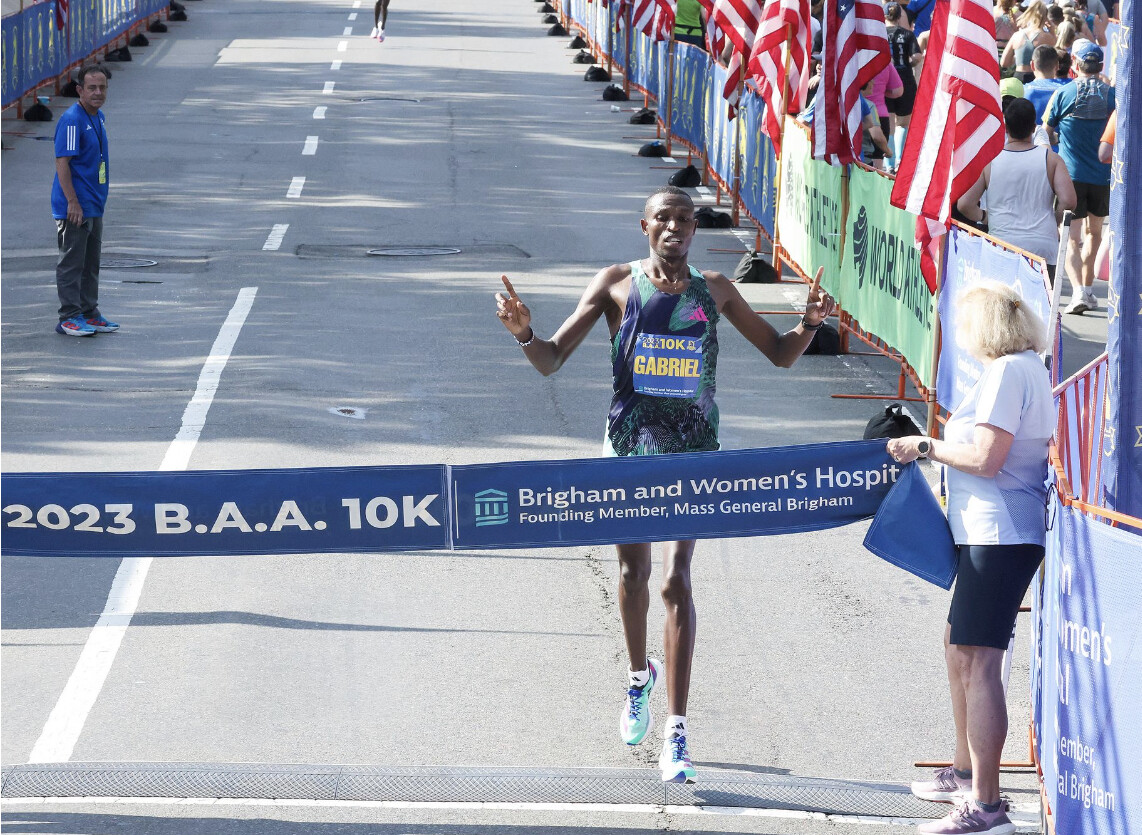
From the outset Obiri asserted her frontrunning prowess, building a 13-second lead by 5K. It was then that the hot and humid conditions began to impact the double Olympic medalist.
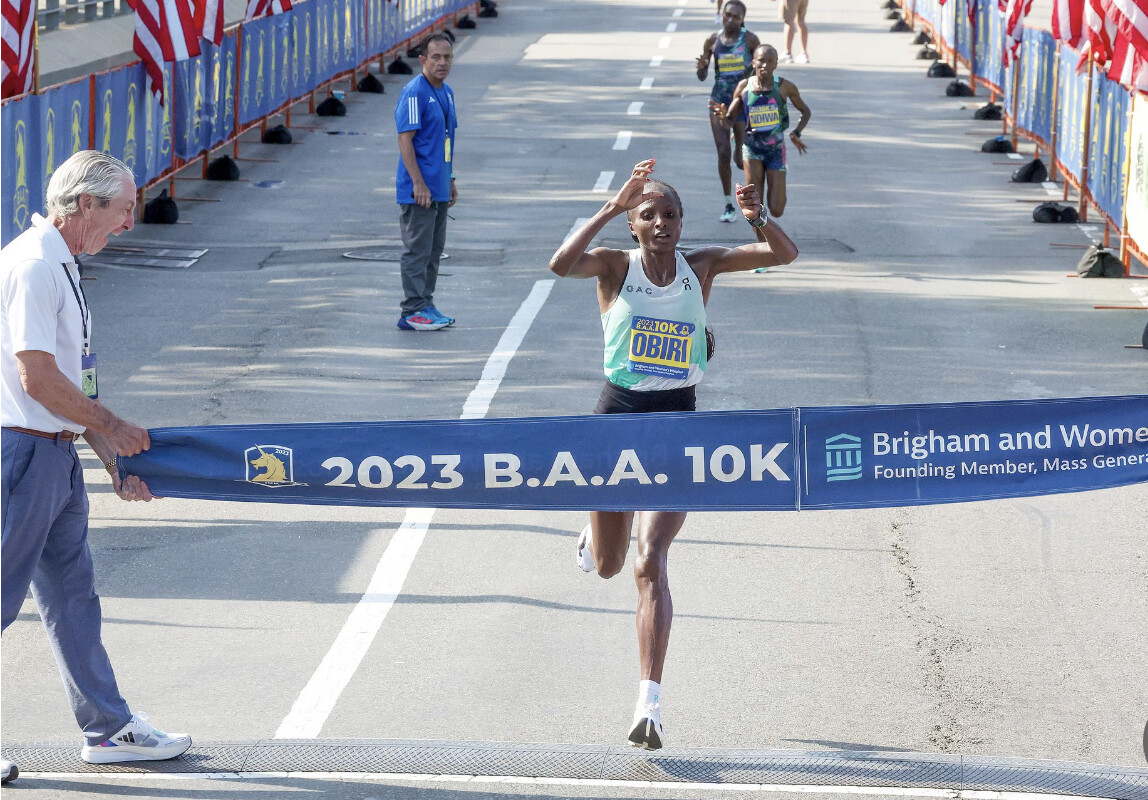
“At 8K my body was so tired. Maybe I went out too hard from the start,” admitted Obiri. “The ladies coming from behind were so strong. But I say, I’m also the best. I can try to win.”
That she did, crossing in 31:21. Stacy Ndiwa of Kenya was second in 31:25, followed by compatriot Sheila Chepkirui (31:27), American Emily Sisson (31:35), and Kenyan Mary Ngugi (31:45).
“I’m so happy about the result,” said Obiri between smiles. “I wanted to run in the 30s [minutes] but unfortunately the weather was too hot, it was humid. But I am so happy for the win today.” The energetic support from the Boston running community also spurred Obiri on: “The crowd was so friendly, all the way they say Go Hellen! You get that energy; you want to race hard so that don’t let your fans down.”
A pack of nine men hit the halfway mark in 14:11, though Geay soon began pressing the accelerator. He’d hit 8K with a five second lead (22:16) before extending the margin of victory to 11 seconds at the finish. Kenya’s Edwin Kurgat (28:01) was second, with Kenyan Alex Masai rounding out the podium in third (28:09). American Diego Estrada was fifth in 28:19.
“I tried to push at the beginning, and from 6K or 5K I tried again to push it. There were three guys at my back but in a few meters they dropped off. I was intending to win,” said Geay, who is coming off a runner-up finish at the Boston Marathon in April. “The time was fast. I was hoping to run 27; I’m happy because of the weather.”
(06/25/23) Views: 114Courtney Dauwalter breaks record at Western States 100 by almost 80 minutes
Ultramarathon runner Courtney Dauwalter crushed the women’s course record at the Western States 100-mile race in California, taking more than an hour off the previous best time.
Dauwalter finished the Western States 100 – the world’s oldest 100-mile race – in 15 hours, 29 minutes and 34 seconds, almost 80 minutes faster than Ellie Greenwood’s record set in 2012. The race was first run in 1974.
“I just kept asking [my legs] to do one more mile for me and they kept responding, so I was very thankful for that,” Dauwalter told iRunFar about the last 20 miles of the race.
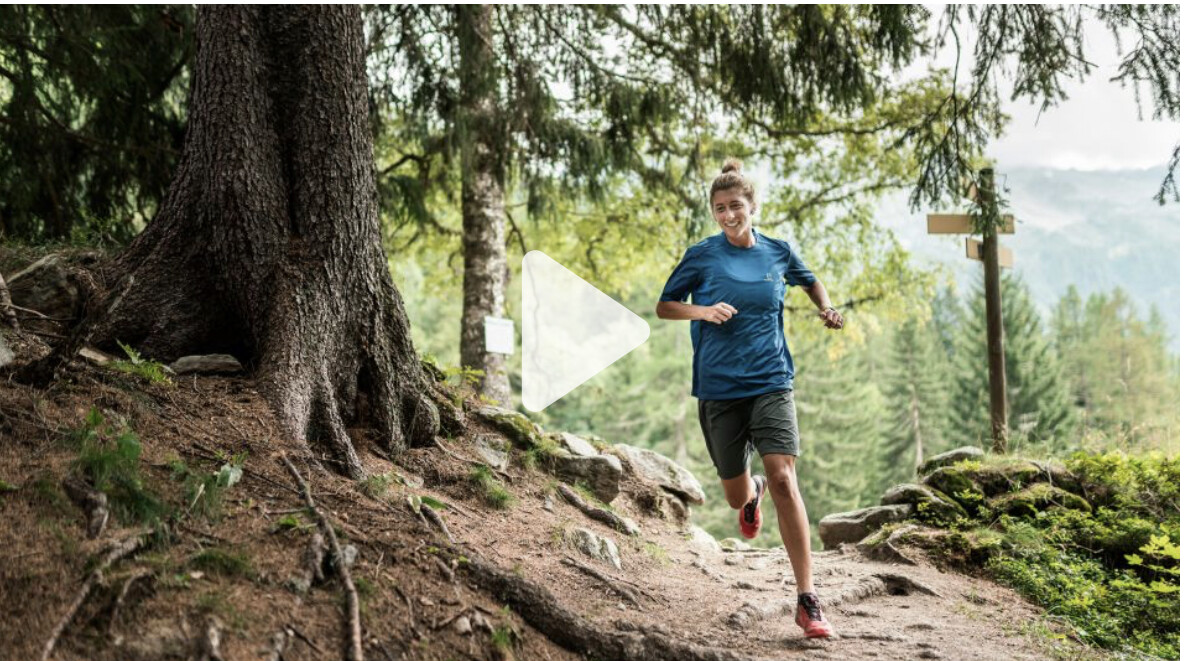
“I was definitely, though, deep in the pain cave and really focused on every single step, every single second.”
Cooler weather contributed to faster times at this year’s Western States 100, which started in the early hours of Saturday morning in Olympic Valley, California.
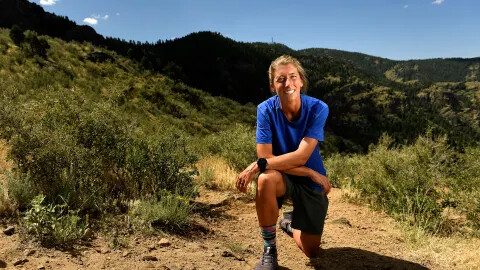
Snow covered much of the initial stages of the course before runners descended into a recently unshaded section scorched by last year’s Mosquito Fire.
After running with fellow American Katie Schide, Dauwalter started pulling away around the 30-mile mark, steadily eating away at Greenwood’s course record.
Covering 18,000 feet of climbing and almost 23,000 feet of descent across Californian trails, the race finishes on a high school running track in the city of Auburn in Placer County.
“I couldn’t believe when the track suddenly showed up and you make that turn, I was like: We did it! We’re here!” Dauwalter told iRunFar.
“Because that was the moment where I let myself actually believe that we had finished and we were about to be able to stop moving.”
Dauwalter, who is set to defend her title at the Hardrock 100 in Colorado in three weeks’ time, also won the Western States 100 in 2018, though her time this year was nearly two hours faster.
Most people’s idea of fun wouldn’t involve running for hours on end through brutal, undulating terrain – but ultra-marathon sensation Courtney Dauwalter is no ordinary person.
While an ultra-marathon is technically defined as any race longer than 26.2 miles, Dauwalter’s exploits tend to take place at distances far greater than that, usually between 100 to 250 miles.
The 38-year-old’s list of achievements is almost interminable. Dauwalter, a four-time ‘Ultra Running Magazine Ultrarunner of the year,’ holds multiple course records for the obscenely long races around the US and abroad.
Dauwalter’s breakout moment came at the Moab 240 – an annual 240-mile race in Utah. At the 2017 edition, shortly after making the decision to become a full-time ultra-runner, Dauwalter completed the course a scarcely believable 10 hours ahead of all other competitors – male and female.
The Transgrancanaria event on February 24 – Dauwalter’s most recent escapade - resulted in her 15th straight race win by gender dating back to March 2021, according to results database Ultrasignup.
The Minnesota native completed the grueling 128km course (79.5 miles) – including over 7000 meters of elevation gain - around the Canary Island in a course record 14 hours 40 minutes: over 90 minutes ahead of her closest competitor.
(06/26/23) Views: 1082023 Western States 100 Women’s Race
None of the first four women from last year’s race — Ruth Croft, Ailsa MacDonald, Marianne Hogan, Luzia Buehler — returned. That made Zimbabwe’s Emily Hawgood (pre-race interview) the highest returning finisher from 2022. Hawgood’s pretty much a race local now too, living in nearby Roseville, California. But it was 38-year-old Courtney Dauwalter (pre-race interview) that came into the race as a favorite. She won here in 2018 in 17:27 and was looking to avenge a late drop at the 2019 race.
Dauwalter was first up the Escarpment. At 2,500 feet, it’s the race’s biggest climb and it happens right away in the first three miles. But 2022 UTMB winner Katie Schide (pre-race interview) was right there too. Schide, an American who’s lived in France for the past seven years, hit the top in 46 minutes with Dauwalter and the two dropped into the Granite Chief Wilderness together. Already Dauwalter and Schide, age 31, had a three-minute lead on third-place Ida Nilsson (pre-race interview) from Sweden.
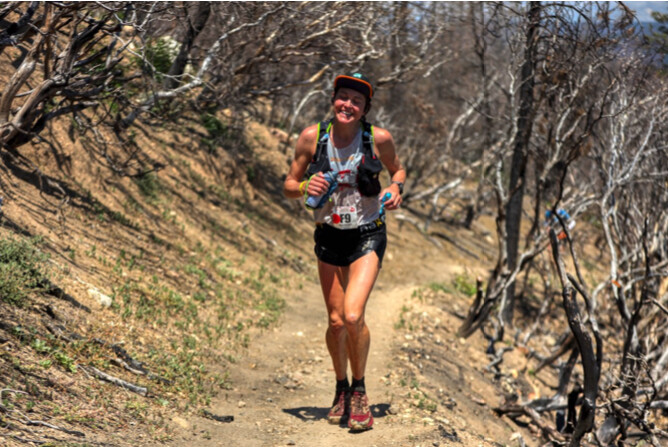
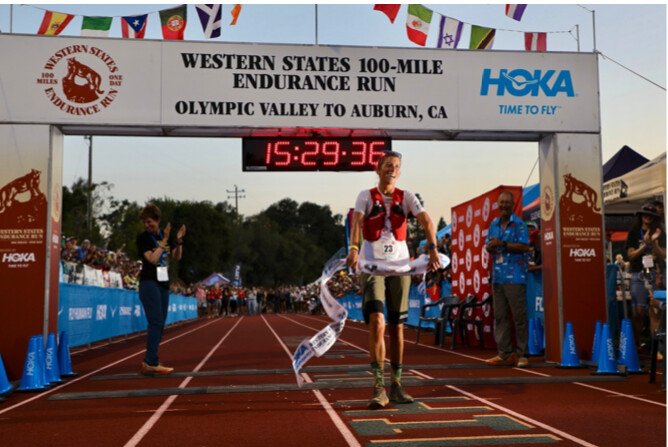
By mile 11, Lyon Ridge, Dauwalter and Schide’s lead on third-place Nilsson had ballooned to eight minutes. And then it got even bigger as the two completely broke away from everyone else. At mile 16, Red Star Ridge, no one was within 14 minutes of the front two. Nilsson, Hawgood, 2023 Black Canyon 100k winner Keely Henninger (pre-race interview), Taylor Nowlin, professional triathlete-turned-ultrarunner Heather Jackson, Canada’s Priscilla Forgie and Jenny Quilty, and 2022 sixth-place finisher Leah Yingling (pre-race interview) all ran inside the early top 10.
The Mosquito Fire limited crew access this year and everyone met their crews for the first time at mile 30, Robinson Flat. Dauwalter was in at 5:07 and out within a minute, and still on her 2019 splits. Schide took a longer break and changed shoes, exiting the aid station three minutes behind the leader. The two had completely broken open the women’s race. Nilsson, in her 100-mile debut, had been alone in third to this point, but was now joined by Henninger, Hawgood, and Nowlin.
At mile 34, Miller’s Defeat, the course record watch started. Dauwalter and Schide were under Dauwalter’s own 2019 splits and Ellie Greenwood’s 2012 course record pace. Dauwalter was five minutes up on Greenwood’s splits, and Schide was three minutes faster. Even more, the two were over 30 minutes in front of third-place Hawgood at mile 38. Dauwalter and Schide were out front for the win and the course record, and the other contenders grouped behind them.
Dauwalter was red hot up the Devil’s Thumb climb at mile 48, but Schide hadn’t given up much time. She took longer in aid and left six minutes after Dauwalter. Hawgood, Nowlin, and Henninger came in together next, now 40 minutes behind second-place Schide.
At Foresthill, Dauwalter was 25 minutes up on record pace. Schide conceded only another two minutes over the last stretch and was 11 minutes behind Dauwalter. While Dauwalter and Schide were still off the front, the race dynamic was heating up behind. The third- through eighth-place women were all in Foresthill together with only three minutes separation. Hawgood was there first among the chase group, but Hungarian living in Hong Kong Eszter Csillag quickly jumped from eighth at mile 52 to fourth at mile 62. Nilsson was fifth, and Henninger, Katie Asmuth, and Nowlin were all there too.
Dauwalter ran 2:10 from mile 62 Foresthill to mile 78 at the American River. Only the men’s winner would run a quicker split on this day, and only eight men have ever run a faster split in the race. Dauwalter was five levels better than everyone else, and she was boldly racing without a pacer too. Schide stayed comfortably in second, but fell further behind Dauwalter’s quickening pace and river conditions necessitated that everyone cross the American River in a boat this year.
From Foresthill to the river, Katie Asmuth vaulted into third, past Eszter Csillag and Ida Nilsson. Asmuth was seventh at Foresthill and picked up four spots on the downhill Cal Street stretch, outrunning common expectations in coming back from injury. All three women split faster from Foresthill to the river than Schide did and even if the front two were gone, the women in general were running really fast. There’s bound to be some bad luck in a 100 miler though, and Henninger fell just before the river and dislocated her shoulder. She would then drop from the race at mile 80, Green Gate, due to that injury.
Dauwalter’s incredible second half and incredible race brought her to the Placer High School track finish in 15:29. Dauwalter completely shattered the record books and set a new standard that is likely to last for a lifetime. Ellie Greenwood’s 16:47 course record had stood since 2012. Dauwalter will next race the high altitude 2023 Hardrock 100 in Silverton, Colorado, on July 14. Dauwalter is the Hardrock course record holder, too, but Western States plus Hardrock will certainly be a challenging double.
Schide challenged Dauwalter early, and outpaced the rest of the women’s field in doing so. Schide was in second for much of the day, ultimately finishing as runner up in 16:43. That was also under the old course record.
Csillag, who was fifth at the 2022 UTMB, had a remarkable second half to finish third in 17:09. It is the race’s fourth-fastest run ever. And she just edged out Asmuth, who moved up from last year’s ninth-place run to finish fourth in 17:21. Asmuth’s time was just inside of Ruth Croft’s winning time from last year, and is the race’s fifth-fastest ever.
Hawgood earned a second straight fifth-place finish. In 2022 she was able to finish fifth in 18:16 and in this year’s faster race Hawgood was fifth in 17:26. That time ranks eighth-best ever and is just faster than what Dauwalter ran to win in 2018.
Taylor Nowlin improved her finish place by one from prior year, but like Hawgood greatly improved her finish time. Nowlin was sixth in 17:40. One-hundred-mile debutante Ida Nilsson was seventh in 17:43, and Priscilla Forgie was just minutes back in eighth at 17:46. Leah Yingling was a repeat top-10 finisher in ninth at 17:49. For perspective, no year had seen more than three women finish under 18 hours before. But this year nine women finished under 18 hours. It is the new standard for women’s racing at Western States.
The 25-year-old Meghan Morgan took the prized 10th-place finish in 18:11, thereby guaranteeing a chance to automatically return next year.
(06/25/23) Views: 107Justin Mock I Run Far
Unleashing Potential: Exploring Why the Gambling Industry Could Be a Beneficial Sponsor for Running Events
Running events have gained quite popularity in the last few years. They become a center of attraction for people who particularly have a passion for fitness. Such events, inarguably, require a large amount of funding for the organization and execution. The event organizers are often on the lookout for sponsorships to get proper funding.
There is one industry that offers great potential for sponsorship and is also quite in demand – the gambling industry. This article takes a deep dive into the reasons why the gambling industry could be a beneficial sponsor for running events.
1. Promotion of Responsible Gambling Practices
As unfortunate as it might be, the lack of awareness related to gambling has resulted in people disregarding its responsible practices. By partnering up with the gambling industry, running events can play a crucial role in raising awareness about responsible gambling and how it is done while staying within one’s means.

Several casinos, such as Zodiac Casino, are to be named prime examples of gambling done in the right way. The participants in running events will come to know about this through sponsorship. What’s more, Zodiac Casino sign-up is a pretty hassle-free procedure, which further provides the players with opportunities to practice online gambling in the most responsible manner. Ever since its launch in the early 2000s, it has continued to provide people with the opportunity to play for real money.
2. Financial Support
The gambling industry possesses all the financial means to offer substantial funds for running events. Said funds can be used to organize the events and execute them by renting out the venue, marketing the event on multiple platforms, and looking after the convenience and demands of participants.
Moreover, online casinos are popular in this regard since the funding coming from them is used to invest in enhancing the experience of runners.
As reported by BBC, Aston Villa's Fan Consultation Group stated, “The commercial reality is that for teams outside the top six, such sponsors offer clubs twice as much as non-gambling companies.”
3. The Subsequent Exposure
Online casinos have a massive online following and reach. By enlisting its help, running events can successfully manage to reach a broader audience. The use of promotional ads and posts on various social media platforms is said to be quite effective in leading to higher participant registrations.
As a matter of fact, various brands take advantage of the reach of online casinos to maximize their visibility on online forums. Active gamblers discover such brands on the websites and accounts of casinos and search for them later.
Conclusion
Promoting responsible gambling practices and awareness regarding casinos, along with financial funding and larger exposure to a broader audience, is one of the primary reasons why the gambling industry is considered a beneficial sponsor for running events. It can contribute to the success of such events and further provide a more dynamic event landscape.
(06/26/23) Views: 104UTMB book reveals the history of the famous event delving into controversy over prize money and the people behind the race
A new book to mark the 20-year anniversary of the Ultra Trail du Mont Blanc (UTMB) highlights the human story behind the event, contextualising controversies such as prize money.
“I don’t always agree with the founders’ decisions personally but I always found the answers very interesting and it gave me more perspective and understanding,” said Doug Mayer, 58, the book’s author.

The book – The Race that Changed Running: The Inside Story of the Ultra Trail du Mont Blanc – details the history of the UTMB with interviews with the founders Michel and Catherine Poletti.
The race is the most high-profile event in trail and ultra running. The main event is the 171km race from Chamonix, all the way around the Mont Blanc Massif, through Italy and Switzerland and back to Chamonix in France.
During the week, there are also other races: the 145km TDS, the 100km CCC and the 56km OCC.
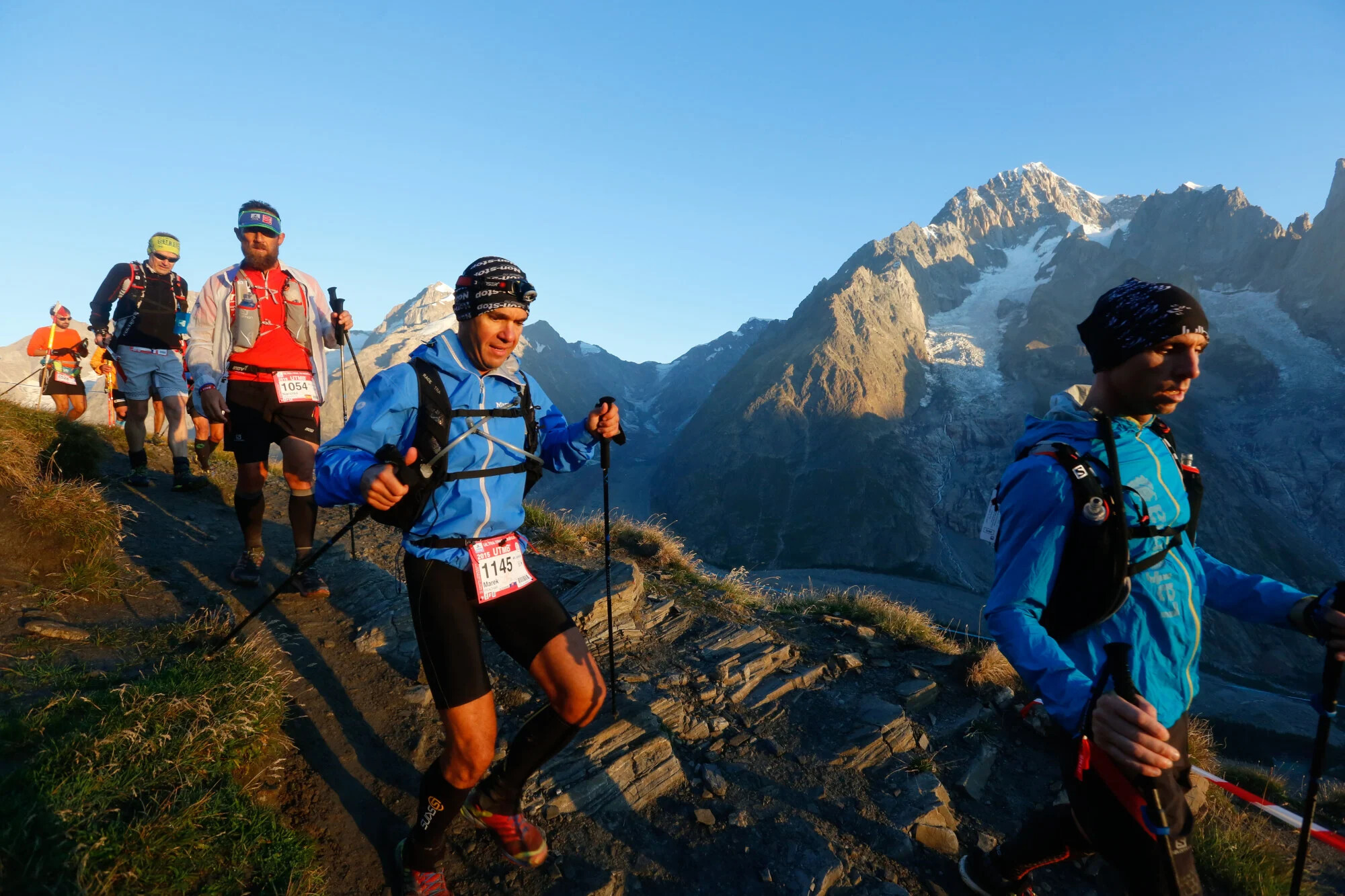
The UTMB has often been criticised for being too commercial. They have expanded to different countries with races “by UTMB” and recently partnered with Iron Man to make a world series, through which runners can qualify for the main event in Chamonix.
The founders of the UTMB check the book for accuracy, but they were not allowed to change anything, and had no editorial control.
He did not shy from asking controversial questions. Some of his critical views of the race have been softened by the human side of the answers.
For example, the UTMB seemed to be making money, but offering little or no prize money to its runners, attracting a lot of controversy.
“It turns out that Catherine had been the treasurer of the Marathon Mount Blanc [a different race] many years ago at a time when East African runners were winning and she was writing cheques out to their managers,” Mayer said.
“She knew exactly what was going on – the money wasn’t going to the athletes, it was going to the managers. That horrified her. When she talks about that today, you can hear the indignant tone in her voice.
“That informed their thinking about prize money. For years, they saw prize money as corrupting.”
Since then, trail running has become increasingly professional. Runners and critics, including the Post, called for the UTMB to offer prize money. In 2018, they did. There were calls to give more than a token amount, to recognise that the athletes are professional runners who need to make a living.
Major publications like Outside Magazine had headlines such as “UTMB and ultrarunning’s amateurism problem”.
As of 2022, the UTMB offered US$10,400 to the winners of the UTMB, CCC and OCC, around US$5,200 for second place and US$3,125 for third. Fourth and fifth places got around US$1,500, while sixth to 10th earned US$1,000.
“I think one of their human faults is that they’re slow to change,” Mayer said, adding that he hoped people would be more forgiving of it.
One of the sources of the problems is that people have suggested the Polettis are in it for the money. In the book, the Polettis pointed out that they could have cashed out years ago. They said they wanted to pass the race on to their children.
Even the 40 per cent sold to Iron Man was not the 40 per cent they owned. It was sold to Iron Man by Group Telegram, although Iron Man did buy 5 per cent from the Polettis.
Mayer is American, but lives in Chamonix and speaks French. He has interviewed the Polettis many times but even he was taken on a journey.
“I learned a lot about them and that made them more human,” he said. “They’ve had their struggles, like all of us.”
Michel grew up in Chamonix. After university, he went to Paris to become a computer programmer.
“And he was miserable about it,” Mayer said. “A friend of Catherine said, ‘Well, you guys have a choice. It’s Paris and antidepressants, or it’s back to Chamonix.’ And they went back to Chamonix and moved into the garage of his father.”
They renovated the chalet, and it’s where they still live.
“They’re not the people that a lot of people think they are,” Mayer said. “The race is not entirely the race we think it is.”
(06/23/23) Views: 93Eliud Kipchoge says he is determined to keep on writing history — and secure a third Olympic marathon crown next year
Eliud Kipchoge is widely regarded as the greatest marathon runner of all time has set himself many challenges in his dazzling career, and remains insatiable despite his two Olympic titles, his world record of 2:01:09 in Berlin in 2022 and an incredible 15 wins in 18 marathons he has entered.
He broke the mythical two-hour barrier over the 26.2 mile (42.195 kilometre) distance in Vienna in 2019, with a time of 1:59:40, but the feat was not recognised as an official world record as it was not in open competition.
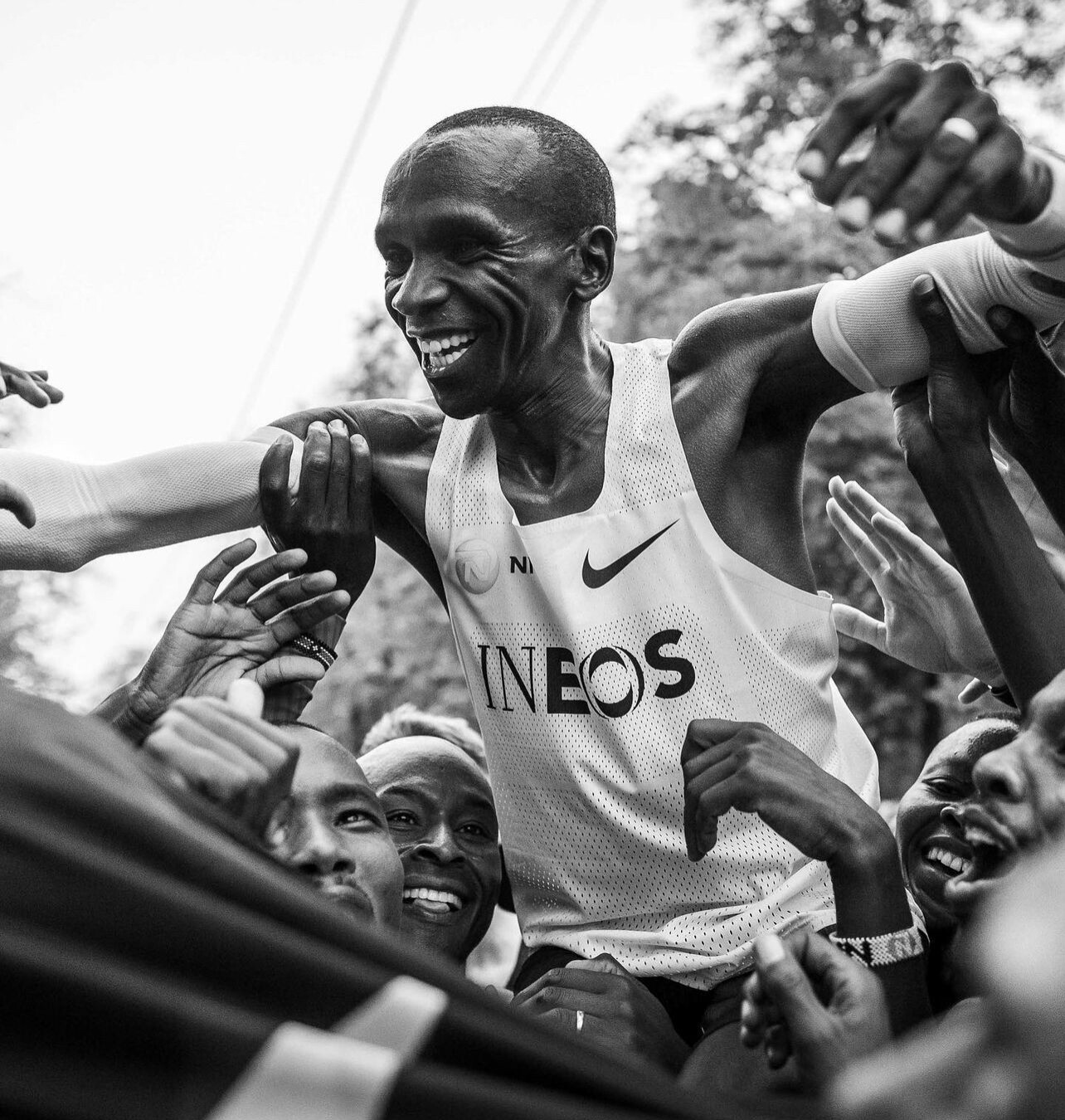
Victory has eluded the 38-year-old in the Boston and New York marathons, which if he won would make him the first man to have all six major titles under his belt.
"The priority now is to focus on the Olympics and win a third time. The other (challenges) will come later," Kipchoge says in an interview with AFP at the renowned Kaptagat training camp in Kenya's Rift Valley.
His two Olympic marathon gold medals in 2016 and 2021 put him at level pegging with Ethiopia's Abebe Bikila (1960, 1964) and Waldemar Cierpinski of East Germany (1976, 1980).
A third gold at the Paris Olympics in 2024 would make Kipchoge the undisputed marathon giant at the Games, and bring him a victory steeped in symbolism.
The French capital was the city where he won his first international crown in 2003 at the age of 18, clinching the 5,000 metres world championship title ahead of sporting legends Hicham El Guerrouj of Morocco and Ethiopia's Kenenisa Bekele.
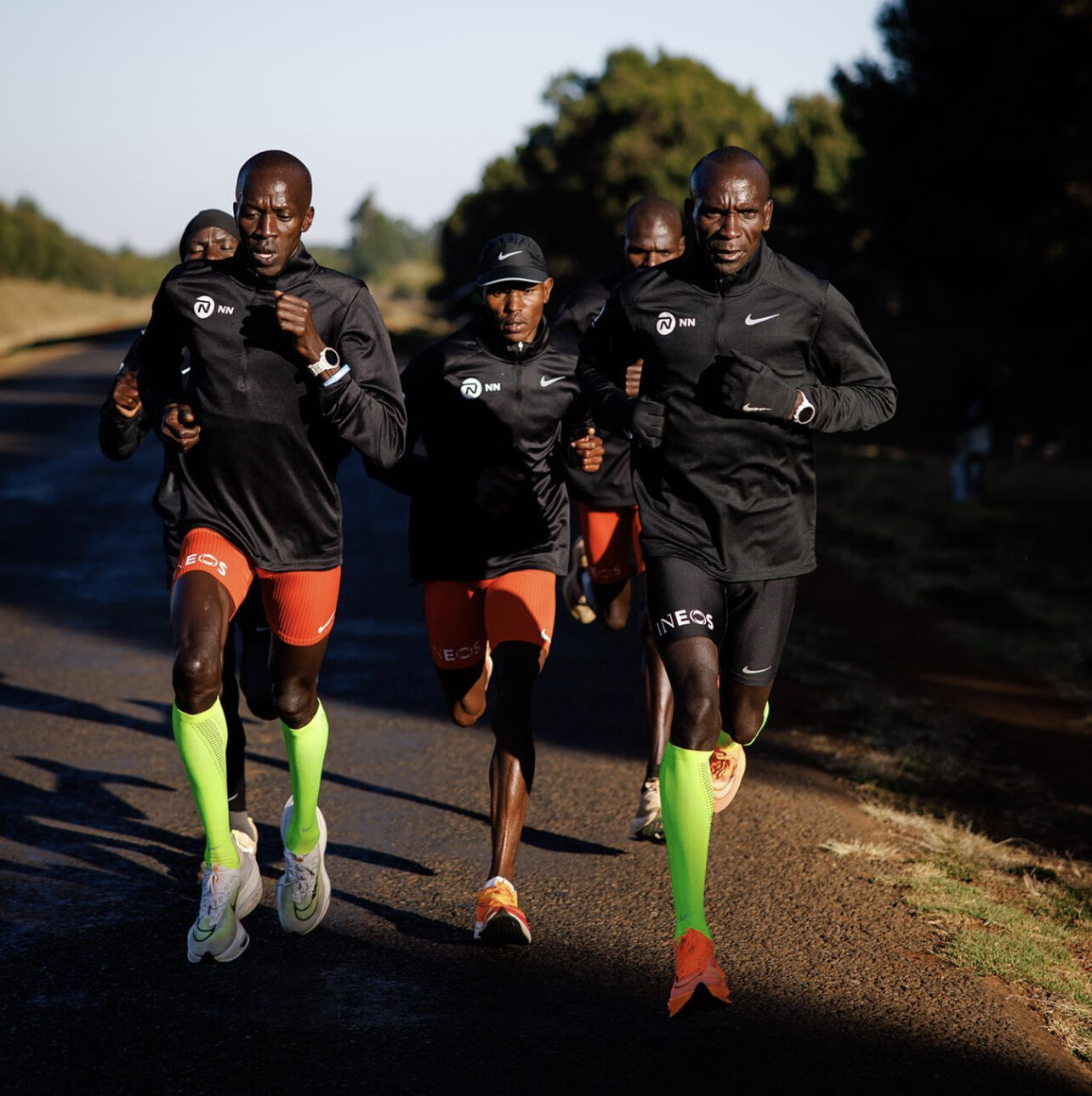
However, Kipchoge does not rule out giving up on his other goals.
"If time comes in to hang the racing shoes, I will say bye to other big things in sport."
'I know myself'
Sitting on a shaded bench in the Kaptagat camp where he has lived and trained for several months a year for 20 years, Kipchoge looks back on his poor showing in Boston on April 17, where he dropped from the lead group in the 30th kilometre and ended up finishing sixth.
This rare failure dampened his spirits.
"I'm trying to forget what has happened in Boston. It's caught in my mind... but I believe that what has passed has passed."
With his lifelong coach Patrick Sang, he has analysed the reasons for his disappointing performance, saying "it's mostly the hamstring".
He brushes aside concerns about his difficulties on hilly courses such as Boston and New York and which will also confront him in Paris.
"It is not really a concern, but I respect everybody's thoughts," he says. "I think it was a bad day and every day is a different day. I'm looking forward for next year.
"Everybody can write anything, you have no control. But I know myself."
'Want to be an inspiration'
Kipchoge is now preparing for his final marathon of the year.
"I'm doing well. My training is going on in a good way," he says.
But he has not yet disclosed which event it will be — Berlin on September 24, Chicago on October 8 or New York on November 5.
"At the end of July, I will know where to go."
He is following his usual training programme, eating up more than 200 kilometres a week on the red dirt tracks of Kaptagat forest, 2,400 metres above sea level.
Among his 20-odd training partners at the camp at the time of the AFP interview were Kenya's new 1,500m and 5,000m world record holder Faith Kipyegon and two-time New York marathon winner Geoffrey Kamworor.
As the respected dean of Kenyan athletics, Kipchoge is happy to see the emergence of 23-year-old compatriot Kelvin Kiptum, who won the London Marathon in April in 2:01:25, the second fastest time in history and just 16 seconds away from his own world record.
"I want to be an inspiration and I trust my breaking the world record twice is an inspiration to many young people. I trust they will want more and even beat my records."
'Prioritise drugs tests'
But in a country where athletics has become tainted by large-scale drug use, Kipchoge laments that "many people are going into shortcuts to advance".
"I think doping is there... It's all more about getting rich."
Kipchoge says the authorities should prioritise testing for performance-enhancing substances, saying it was much more important than education "because everybody who is doing doping knows what is going on".
"Just pump everything in testing, put testing as a first priority and all will be well," he says.
"The moment we prioritise testing and we register those who are handling the athletes across the country, we have the right data to know who is who in the whole country.
"But if we really ignore the people who are working with athletes and athletes themselves, then we are in danger."
(06/27/23) Views: 892023 Western States 100 Men’s Race
There’s nowhere to go but up at the start of the Western States 100, and Jia-Ju Zhao from China charged the opening climb. Despite snow, Zhao hit the top in 42 minutes. Slower to the top, Frenchman Mathieu Blanchard (pre-race interview) and Brit Tom Evans (pre-race interview) turned to greet the brilliant sunrise together.
Zhao won the Ultra-Trail Mt. Fuji 100 Mile in April 2023 and is a two-time winner of the Doi Inthanon by UTMB 100 Mile in Thailand. He pushed his early lead to five minutes at Lyon Ridge, mile 11, while 2022 fourth-placer Tyler Green led the early chase group. Green had finished as high as second here before, in 2021, but was running more aggressively toward the front earlier than ever before.From mile-15 Red Star Ridge to mile-25 Duncan Canyon, the chase group started to make up time on Zhao. Tom Evans, Chinese runner Jia-Sheng Shen, and Dakota Jones (pre-race interview) were among a group that cut four minutes from Zhao’s lead over just nine miles. Evans was third here in 2019 in 14:59, and Jones had just biked 680 miles from his home in Utah to the race start.

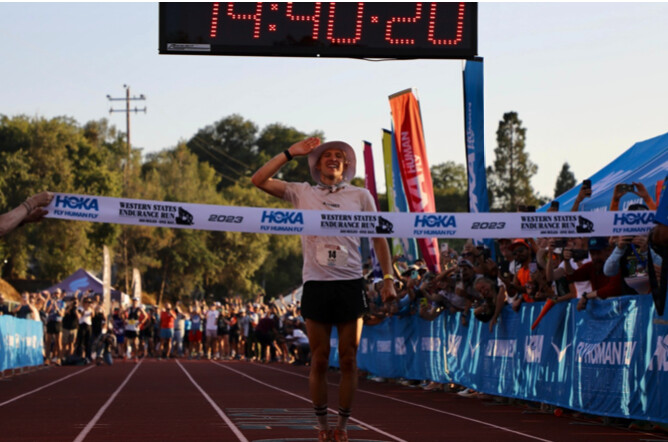
Zhao was quickly swallowed up in the next five miles to Robinson Flat, mile 30, and soon fell out of the top 10. A lead trio of Tom Evans, Dakota Jones, and Jia-Sheng Shen came into aid at 4:45, meeting their crews for the first time. At mile 30 and with Zhao falling backward, Anthony Costales (pre-race interview) was fourth, and then he was with Tyler Green at mile 38 in fourth and fifth. The two would barely separate the rest of the race.Evans and Jones dropped Shen on the climb to Devil’s Thumb, mile 48, and the two leaders came into aid together in 7:03. Four minutes back Costales had caught Shen on the big climb, and Tyler Green, Jeff Colt, New Zealand’s Daniel Jones, Ryan Montgomery, Mathieu Blanchard, and 47-year-old Ludovic Pommeret were inside the top 10. Those six were 14 minutes apart. 2022 third- and second-place finishers Arlen Glick (pre-race interview) and Hayden Hawks (pre-race interview) were back in 11th and 16th, respectively. After earlier moving up, Hawks had just lost several places and would later drop with injury at mile 55. Other top-10 finishers from 2022 Cody Lind, Scott Traer, and Alex Nichols were all noticeably outside the top 10 too.
As the race shifted to its mile-62 Foresthill hub, Evans gained some separation on Jones and entered the aid station first, but as Evans changed shoes and socks, Jones didn’t wait and exited first. Jones was now in the lead by himself for the first time and he was overheard voicing his intention to break Evans. Some 11 minutes back of those two leaders, Green and Costales were again together and in third and fourth. Shen and Jeff Colt were just minutes back of those two, and Colt was remarkably almost an hour faster than a year ago when he finished 11th.Jones and Evans separated leaving Foresthill and anticipation ran high for their next steps. The two had been together for nearly the entirety of the race to this point. Jones wanted to make a move and Evans wanted to keep up with (the) Jones. The duel ended quickly and dramatically though. Tom Evans dropped a 5:54 downhill mile and hit Cal 2, mile 71, in 10:12. That surge pushed Jones eight minutes back at mile 71. It was just nine miles from Foresthill to that split on Cal Street, but the front two had shattered and moved in opposite directions the rest of the race.
Evans ran alone to the river crossing at mile 78, and ultimately to the finish. Tyler Green, Anthony Costales, Jeff Colt, and Jia-Sheng Shen all overtook Dakota Jones on the way to the river too. Forget about Elm Street, Jones was having a bit of a nightmare on Cal Street.
Evans, the 2022 UTMB third placer, continued to put time on the field the rest of the way. He finished in 14:40 and that’s the race’s fourth fastest finish ever. The mark trails only Jim Walmsley and Jared Hazen in 2019, and Walmsley’s 2018 mark too. Evans was a runaway winner, but the rest of the top 10 was much more closely packed.Tyler Green pushed on in second, and held off an Anthony Costales chase over the last 15 miles. Green finished in 15:04. It was his second runner-up finish and a big personal best for the course. He was able to finish with his baby boy on his shoulders. Green’s 15:04 was the race’s 11th-fastest finish ever. Costales was third in 15:09, the race’s 13th-fastest finish ever.
Jia-Sheng Shen and Daniel Jones both finished fast. Shen clocked 15:19 and Jones was fifth in 15:22. Mathieu Blanchard and Ryan Montgomery both overtook Jeff Colt late. Those three — Blanchard, Montgomery, and Colt — finished in 15:37, 15:38, and 15:42, respectively. Local runner Cole Watson bettered his 2022 14th-place finish with a ninth-place 15:54.
In 2019 the top 10 all went under 16 hours. This year’s 10th-place man Janosch Kowalcyzk from Germany just missed matching that feat. He finished in 16:09.
Seven of last year’s top 10 returned, but only Tyler Green was able to again make the top 10. The 2022 top 10 finishers Ludovic Pommeret, Arlen Glick, Scott Traer, Cody Lind, and Alex Nichols finished 12th, 13th, 15th, 16th, and 28th this year, respectively. As earlier mentioned, 2022 runner-up Hayden Hawks dropped.
After running near or in the lead through Foresthill, Dakota Jones finished 17th in 17:00.
Early leader Zhao’s high risk, high reward start ended with a drop at Michigan Bluff, mile 55.
(06/25/23) Views: 78Justin Mock I Run Far
These simple tricks will have you gliding effortlessly over hills and up mountains
Running uphill seems simple in theory, but many runners struggle with the challenge or avoid hills altogether. Striding up some vert can help all types of runners, in every distance, boost speed and strength. Learn how to maximize your hill training (without getting hurt) by running both up and down effectively and efficiently.
Practice the long, steady climb
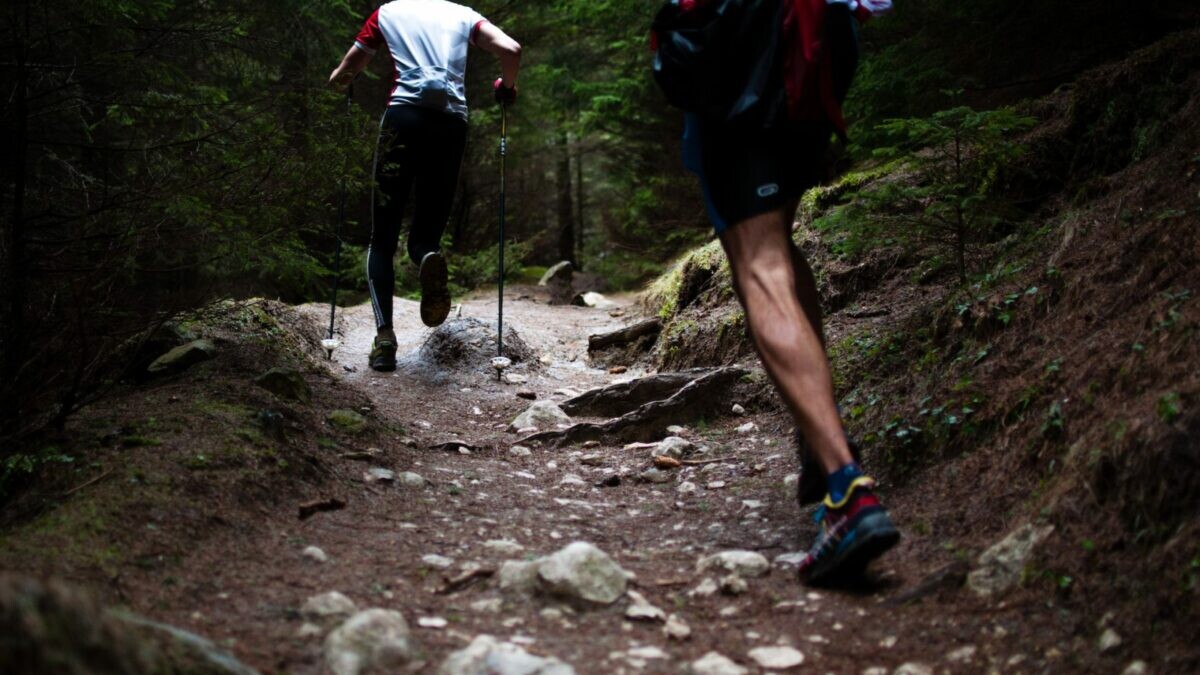
With the exception of hill sprint workouts, you should aim to run uphill at a moderate, sustainable pace. Burning up energy by tackling hills full-tilt will cause a deficit later in your workout or race, while evenly-paced climbing will keep you running smoothly throughout. Studies show many runners tackle hills too quickly at the outset and end up running at greater effort than they can maintain.
Find a hill that takes you 10 minutes or longer to run up (or set your treadmill incline so that your legs are burning but you can smoothly keep pace). Aim to mimic the effort you use on flat terrain, even if it feels like you’re running very slowly. If you find yourself starting to breathe more heavily, slow down.
Lengthen your stride at the top
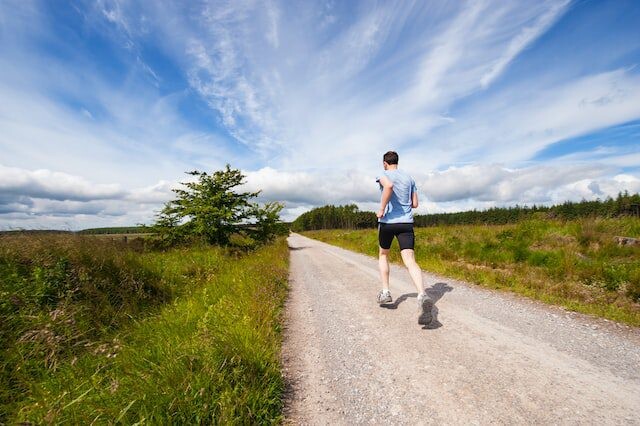
After speeding up a hill, you may have a habit of slowing down (or even stopping) to catch your breath before resuming your normal pace. Runners naturally have a shorter stride heading uphill, and it takes a conscious effort to switch back to your regular stride quickly.
Make a habit of cueing yourself to open your stride and pick up your pace. To get better at this, find a short hill that takes under a minute to reach the top of. Run hard to the top, lengthen your stride, and accelerate for roughly 15 seconds. Run easily back down the hill to recover and repeat five to 10 times.
Learn to love the downhill
Downhill running at high speeds is an art form. Inserting some fast downhill sections into your training will help you gain the confidence needed to have a loose, relaxed gait and fast pace, while avoiding zooming out of control.
After a regular run, add four to six 100-metre strides down a gentle hill that has a grade you feel comfortable playing with speed on. Try shortening your stride, while keeping your arms wide and low for stability. Aim for quick steps and a smooth gait. If you find you are breathing easily, push a little bit harder. As you get more comfortable picking up the pace, find steeper hills to practice on.
(06/26/23) Views: 72Running Magazine


